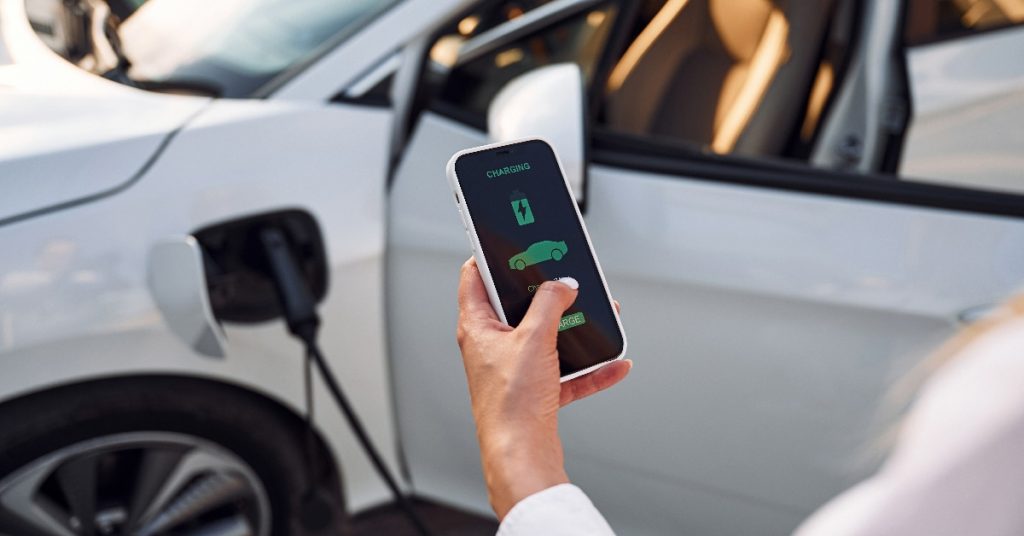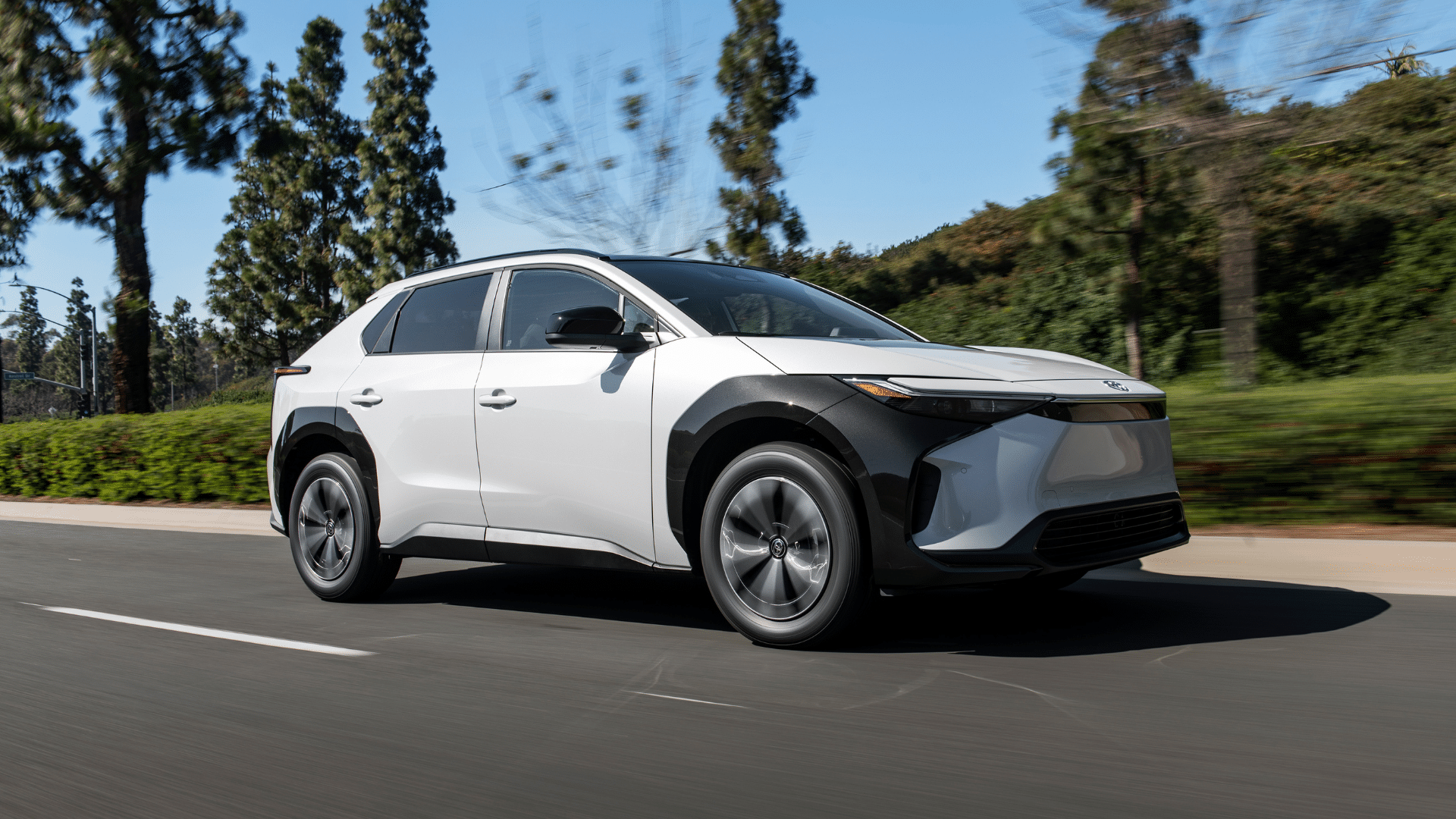
EnergyHub Team
January 30, 2024
This is the second article in EnergyHub’s four-part “Avoiding Gridlock” series on how managed charging can mitigate the distribution impacts of EV charging. Don’t miss the first installment, The impact of electric vehicles on transmission vs. distribution systems, and part three, Why time-of-use (TOU) rates aren’t the long-term solution for managing local EV load.
The transition to electric vehicles (EVs) is critical to achieving the country’s decarbonization goals. Fortunately, many drivers are heeding the call. In 2023, Americans bought more than one million new EVs, and EVs are forecast to continue to make up an increasingly large percentage of new vehicle sales.
The growth of electric load from EV charging could serve as a valuable revenue source for utilities. However, the opportunity comes with a challenge: successfully mitigating the impact of charging load on electric grid infrastructure, especially aging distribution networks.

Below, EnergyHub reviews the distribution impacts of increased EV charging load, with particular focus on the elements that are most likely to fail without intervention: distribution substations and service transformers.
5 ways EV loads will affect the distribution network:
1) Early and unplanned failure of service transformers
Distribution service transformers, service cables, and residential electrical panels draw power from feeders and provide it to customers at the correct voltage (see above graphic). Multiple EVs drawing power from the same service transformer at the same time can cause thermal overloads that result in equipment failure.
For example, when three or four EVs charge simultaneously, 25 kilo-volt-ampere (kVA) transformers risk damage or outright failure. Older 10 kVA transformers could overload when just two EVs charge concurrently.
The greatest threat to service transformers is when they are still hot from daytime load and then multiple EVs begin to charge simultaneously. One study found that a time-of-use program that prompts drivers to charge vehicles after midnight would cause service transformers to fail faster than uncontrolled EV charging.
There are more than 40 million service transformers in the U.S. Given that each transformer costs thousands of dollars to replace, the potential consequences of thermal overload are significant. Supply-chain challenges for replacing transformers add further cause for concern.
2. Damage to substation transformers
Distribution substation transformers, which bring power from high-voltage transmission lines to neighborhood distribution feeders. There are fewer substation transformers to replace than service transformers, but each substation is far more expensive to replace. Utilities can generally replace a service transformer in a day for between $5,000 and $20,000, while replacing a distribution substation transformer costs millions of dollars and may take years to complete.
Across the aging U.S. grid, many substations are already approaching their load limits. It is imperative that EV loads in these locations are modulated to intelligently shift loads when substations approach their limits.
3) Voltage and power quality issues
Even when thermal overload from EV charging doesn’t cause outright equipment failure, it can result in damage to loads such as electronics and motors. When distribution voltages dip too low, electronics may operate improperly and motors may stall, potentially ruining expensive systems like air conditioners.
Voltages that are too high can also cause problems for sensitive electronics. The risk of over-voltage events increases with TOU rates (stay tuned for Part 3 of this blog series) that encourage everyone to charge their vehicles at the same time.
4) Increased costs due to energy losses
Energy losses are unavoidable in any electric distribution system, though they are generally small: about five percent of overall load. However, losses are amplified dramatically by the increased load from electric vehicles. That’s because power losses in wires increase by the square of the electricity current.
For example, if you double the electric load in a distribution feeder, your energy losses will increase by a factor of four. The losses are especially acute for older distribution networks that have lower feeder voltages. Energy losses from unmitigated charging may result in steep costs for utilities.
5) Fleet charging and required network upgrades
The majority of distribution feeders have capacity to add a new grocery store with only modest upgrades. But there are few, if any, distribution networks that can support a shipping company that wants to build charging capacity for 50 electrified commercial trucks without at least some upgrades.
Connecting large new commercial fleets to the grid will require significant upgrades to power distribution systems. These upgrades, which often require millions of dollars and years of planning, can be challenging to execute rapidly. As EV fleets become more common, utilities will need to develop strategies and proactively plan to realize the best return on investment.

Bring it back to revenue
With the right combination of managed charging and energy storage, utilities can reduce the additional distribution capacity needed to support a new EV fleet by more than half. As with all electrification, new load from EV charging results in new revenue. The question is how to invest to ensure that the grid can support affordable and reliable electrification.
In cases where infrastructure upgrades are the only way to service increased load safely, utilities can defray costs over time. Rather than charging customers for upgrades up front, they can use the new revenue from EV charging to cover upgrade costs. In other cases, utilities can defer or avoid the need for additional infrastructure by actively managing EV charging load.
Download our white paper to learn more about how utilities can defer or avoid the need for additional infrastructure by actively managing EV charging load.
Stay tuned: In the next blog in our series, we compare the benefits of time-of-use (TOU) rates and managed EV charging programs…
Interested in keeping up with the latest dispatch from the grid edge?
Get our next post in your inbox.


